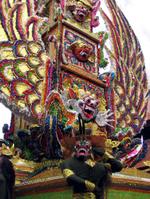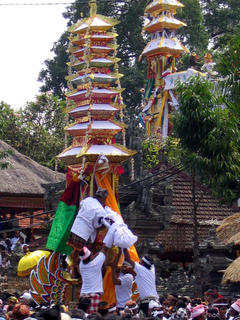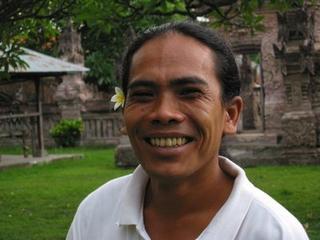 Lemukih is a small village on the northern slope of Bali Central Mountain. It is a small village, which is known for its rice farm, coffee, clove and various kind of tropical fruit cultivation and lies on the altitude of 638 m above the sea level, it is offering a cool mountain air. Lemukih came from a word of Lembu akeh means many cows, as what the story that we have heard from the local people that the village founders found lots of cows around the forest there when they first arrived at the area.
Lemukih is a small village on the northern slope of Bali Central Mountain. It is a small village, which is known for its rice farm, coffee, clove and various kind of tropical fruit cultivation and lies on the altitude of 638 m above the sea level, it is offering a cool mountain air. Lemukih came from a word of Lembu akeh means many cows, as what the story that we have heard from the local people that the village founders found lots of cows around the forest there when they first arrived at the area.We start our walk at around 11:00 AM following the dirt trails that have been used by the local farmers for centuries. The path goes through the local farming area where there are various kinds of crops grows well in a very fertile soil. Along the way we have seen only few simple houses of the farmers who are looking after the farm. We kept observing and recognizing every vegetation that we saw along the way while enjoying the stunning view of the mountain, lush river valley, spectacular rice terraces and lovely waterfall. We kept putting our step on the dirt trails, jumping over the irrigation streams where the clear water run continuously to the rice paddies which terracing down the river valley. The coconut trees grow sparsely along the dike of the rice terraces adding more beauty for the view.
We met a local farmer who was keeping his rice paddies from the birds, we took a rest there while enjoying the great scenery around the paddy filed and was asking him if it's possible for us to have a young coconut as he got so many coconut trees growing around his field. He was nodding and smiling then he walked to his little hut in the middle of the paddy field to get his sickle. He looked around to see one of the trees that have the best young coconut. I was lying on flat basalt on the side of the path while enjoying my clove cigarette. Gusti and my other friend Nyoman was waiting around the coconut tree where the old man is getting us couple young coconut. It was a great resting time for us with the fresh young coconut juice, it was so refreshing and giving us some more energy to continue our walk.

After finishing our young coconut juice and giving a little tip for the old man, we then continue to walk along the dike of the yellow rice paddies down to a stream that leads us to a waterfall. We sit around for a few minutes and having some fruits that we got from a friend in the village before we started our walk. It was really wonderful to sit on the riverside and hearing the sound of the waterfall besides us. Suddenly the rain comes and we ran to a little house on the hillside facing to a lush river valley. The house was empty and we sit on a gazebo around the corner of the house, which has the view over the river valley. We were sitting there for about 15 minutes to wait for the rain stop. We could just sit right out there forever because of the spectacular view over the valley and the mountain in a distance.
We continued to follow the little path which was leading us to another wonderful waterfall, and the path was ended there and we had to walk back and try to find another path along the paddy field and we got to the top of the hill we saw a great view over the northern sea and it was so clear after the rain. We kept following the path and walking through few houses of the farmers and finally came out to the main street of the village. Gusti then got a ride on a motorbike to get the car at the starting point and collecting us back. We drove back to our local friend's house where we were provided with some meal and lots of coffee. It was around 6:30 PM, I was sitting on the veranda of the house and looking up to the mountain that is so close from the house, slowly it came to a silhouette as the sun was setting behind the mountain. What a perfect day in a peaceful little village, Bali is actually still having its hidden beauty.

















